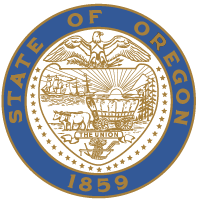Funding will make an estimated 11,000 housing units across 50 communities possible, including coastal and rural communities
SALEM, OR – Today, housing infrastructure investments proposed by State Representatives David Gomberg (D-Otis) and Emily McIntire (R-Klamath Falls) were adopted by the Joint Transportation and Economic Development Subcommittee on Ways and Means. These unprecedented investments in water and wastewater infrastructure will decrease major barriers to building more houses in Oregon in order to meet the State’s housing production goal of 36,000 units per year.
Infrastructure investments now folded into SB 1530 would build out essential water and wastewater distribution lines to new housing, address capacity constraints on building, and unlock residential lands for development resulting in an estimated 11,000 housing units across nearly 50 communities. Some communities in the bill include Siletz, Lincoln City, Butte Falls, Shady Cove, Chiloquin, Manzanita, North Bend, Klamath Falls, and Florence.
“Addressing our state’s housing crisis is the number one priority for Oregonians. But if we want to build more housing, we’re going to need to invest in critical infrastructure projects to do so,” said Gomberg. “This bipartisan proposal will accelerate desperately needed housing production in nearly every corner of Oregon – including our rural communities. I’m glad to see our efforts folded into the larger housing production conversation.”
Following the 2023 legislative session, Reps. Gomberg and McIntire worked with Reps. Mark Owens (R-Crane) and Ken Helm (D-Beaverton), co-chairs of the bipartisan Joint Legislative Water Caucus, to identify necessary projects that would accelerate a broad mix of housing including affordable, workforce, middle, and affordable homeownership developments.
“The work we’re doing here is so important to meeting Oregon’s ambitious housing production goals,” said McIntire. “I’m proud to say we’ve got a package that will not only help us build more housing, but will ensure that Oregon communities, no matter how small, have the resources they need to meaningfully contribute to closing the gap in our housing shortfall.”
“Water and wastewater are critical pieces of the puzzle when we’re talking housing,” said Helm. “A housing production goal of 36,000 units per year is necessary – but to meet this ambitious goal, we’ll need investments like these.”
“Ensuring rural communities aren’t left out of the housing conversation is essential,” said Owens. “And I’m pleased to see a robust proposal like this that will touch every corner of this state.”
Water and wastewater projects funded by the passage of SB 1530 include investments across rural and urban Oregon spanning the Oregon Coast, the I-5 Corridor, the Portland Metro Area, and Central, Southern, and Eastern Oregon. This legislation is crucial now to meet water infrastructure needs before housing is built as a result of future public and private investments to increase Oregon’s housing supply.


